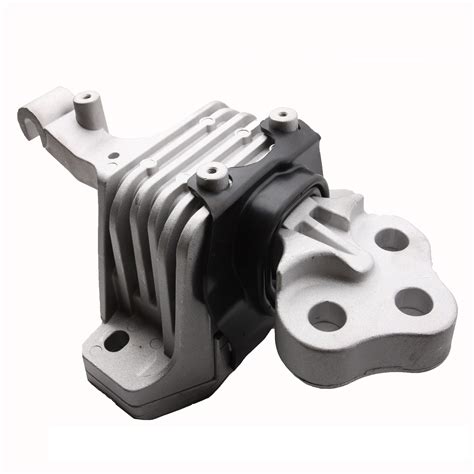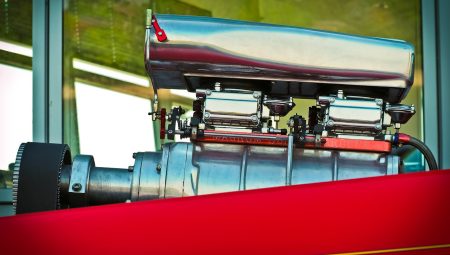Discover the crucial role of engine mounts, types available, signs of wear, and how to replace them for optimal vehicle performance.When it comes to the heart of your Jeep, the engine mounts play a crucial and often overlooked role. These sturdy components are designed to secure your engine to the vehicle’s frame while absorbing vibrations and reducing noise, ensuring a smoother ride on and off the road. In this blog post, we’ll explore what engine mounts are, the different types available, and their vital importance for your vehicle’s performance. We’ll also highlight the signs that indicate your engine mounts may be worn and need replacement. Finally, we’ll provide a step-by-step guide on how to replace engine mounts, empowering you to maintain your Jeep in top condition. Whether you’re a seasoned off-roader or a weekend warrior, understanding engine mounts is essential for keeping your Jeep running smoothly. Let’s dive in!
What are engine mounts?
Engine mounts are essential components in automotive engineering, designed specifically to secure the engine to the chassis of a vehicle, ensuring that the engine remains stable during operation while also isolating vibrations and reducing noise that is transmitted into the cabin.
Typically constructed from a combination of rubber and metal, these mounts act as a buffer between the engine and the rest of the vehicle, absorbing shock and maintaining the proper alignment of the engine, which is crucial for optimal performance and longevity.
In summary, without properly functioning engine mounts, you may experience excessive vibration, premature wear on the engine and transmission, and in the worst cases, misalignment which can lead to serious mechanical failures, thus emphasizing the critical role that engine mounts play in the overall reliability and safety of any vehicle, including your Jeep.
Types of engine mounts
Engine mounts are essential components in any vehicle, including jeeps, as they serve the crucial purpose of securing the engine to the vehicle’s frame while also absorbing vibrations and shocks that can disrupt the smooth operation of the engine. There are several types of engine mounts available, each with unique characteristics and applications, which play a significant role in ensuring the overall performance and longevity of your vehicle.
One of the most common types of engine mounts used in jeep vehicles is the rubber engine mount, which relies on a combination of rubber and metal to maintain flexibility while also providing some rigidity, allowing it to absorb vibrations effectively. Another prevalent type is the hydraulic engine mount, which contains liquid or gel and operates similarly to a shock absorber; it is designed to further enhance comfort by dampening vibrations and noise. Lastly, the solid engine mount provides a more rigid setup, ensuring maximum security for the engine, but at the cost of comfort, as vibrations are transmitted to the cabin more directly.
To summarize, below is a quick comparison of these three types of engine mounts:
| Type of Engine Mount | Characteristics | Pros | Cons |
|---|---|---|---|
| Rubber Engine Mount | Flexible combination of rubber and metal | Good vibration absorption | May degrade over time |
| Hydraulic Engine Mount | Contains liquid for dampening | Excellent comfort and noise reduction | Higher cost, potential leaks |
| Solid Engine Mount | Rigid design for maximum security | Durable and long-lasting | Increased vibrations in the cabin |
By understanding the different types of engine mounts available, jeep owners can make informed choices regarding maintenance and replacements, ensuring their vehicles continue to operate smoothly and effectively for years to come.
Importance of engine mounts
Engine mounts are a critical component in automotive engineering, serving not only to secure the engine to the vehicle’s frame but also to provide vibration dampening, ensuring a smooth ride while minimizing noise levels in the cabin. The importance of these mounts cannot be overstated, as they play a vital role in maintaining the longevity of both the engine and the vehicle as a whole, allowing for optimal performance while simultaneously protecting other components from excessive vibrations and movement.
Moreover, the role of engine mounts becomes even more pronounced in sturdy vehicles such as the Jeep, where durability and off-road capability are paramount, necessitating mounts that can withstand both harsh terrain and heavy usage, thereby preventing engine misalignment and promoting the effective functioning of the drive shaft, transmission, and other vital systems.
In addition to their foundational role, engine mounts also contribute significantly to safety; properly functioning mounts ensure the engine remains secure in the event of a collision, reducing the risk of engine displacement, which could lead not only to costly repairs but also potentially fatal accidents, underscoring the importance of regular inspection and maintenance of these essential components.
Signs of worn engine mounts
When considering the vital function of engine mounts in a vehicle, it becomes essential to recognize the signs of wear that may indicate they need to be inspected or replaced, as these components play a crucial role in securing the engine and maintaining the overall stability of the vehicle.
One of the most prominent indicators of worn engine mounts is an unusual increase in vibration within the cabin while driving, which often manifests as a noticeable shaking sensation, particularly at idle or during acceleration, pointing to the fact that the mounts may be failing to absorb energy from the engine’s movements effectively, thus translating into uncomfortable driving conditions.
Another significant symptom of deteriorating engine mounts is the occurrence of clunking noises when shifting gears or accelerating, which is caused by the engine shifting out of its intended position due to inadequate support from compromised mounts; drivers may also encounter misalignment issues, as the engine could begin to sway or move excessively, potentially leading to further damage to associated components such as the transmission or exhaust system.
How to replace engine mounts
Replacing the engine mounts in your vehicle, particularly in a Jeep, is a process that requires a methodical approach to ensure safety and efficiency, as these mounts are critical in securing the engine to the chassis while also minimizing vibrations, and thus, a careful understanding of each step involved in this procedure is essential for both novice and experienced mechanics.
To begin with, it is important to gather all the necessary tools and materials before starting the replacement process, which typically includes a jack, jack stands, a socket set, a ratchet, and of course, the new engine mounts to be installed, which can usually be purchased from auto parts stores or online retailers that specialize in automotive components.
Once you have all your tools ready, the first step is to safely lift your Jeep using the jack and secure it on jack stands to ensure that it is stable while you work underneath it, and meticulously follow these instructions: remove any components that are in the way of accessing the engine mounts, including the exhaust system or any other bracket that could obstruct your work, and once you have clear access, you can proceed to remove the bolts securing the old engine mounts and then replace them with the new ones while ensuring that everything is tightened to the manufacturer’s specifications according to the service manual.
Frequently Asked Questions
What are engine mounts and why are they important for a Jeep?
Engine mounts are components that secure the engine to the vehicle’s frame. They are crucial for minimizing vibrations, maintaining engine alignment, and providing stability during driving.
How can I tell if my Jeep’s engine mounts are worn out?
Signs of worn engine mounts include excessive vibrations felt in the cabin, engine movement when accelerating or decelerating, and unusual noises such as clunking sounds when the vehicle is in gear.
What are the typical symptoms of bad engine mounts in a Jeep?
Common symptoms include a rough ride, noticeable engine vibrations, a misaligned or tilting engine, and broken engine mount components visible upon inspection.
How often should engine mounts be replaced in a Jeep?
While there is no set schedule for replacing engine mounts, it’s recommended to inspect them during regular maintenance checks. If they show visible wear or if you experience symptoms of failure, replace them immediately.
Can I replace the engine mounts on my Jeep myself?
Yes, replacing engine mounts can be a DIY task if you have basic mechanical knowledge and tools. However, it requires lifting the engine safely, so it’s advisable to consult a repair manual or seek professional assistance if unsure.
Are there different types of engine mounts for Jeeps?
Yes, there are various types of engine mounts, including rubber, hydraulic, and polyurethane mounts. Each type has its advantages; for example, hydraulic mounts can help absorb vibrations better than conventional rubber mounts.
What should I look for when purchasing new engine mounts for my Jeep?
When purchasing engine mounts, consider factors like compatibility with your Jeep model, material quality, brand reputation, and whether you want performance-oriented options like polyurethane or standard rubber mounts.





